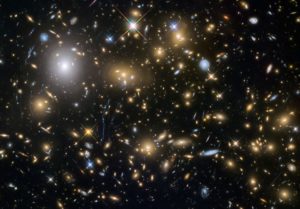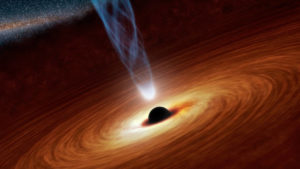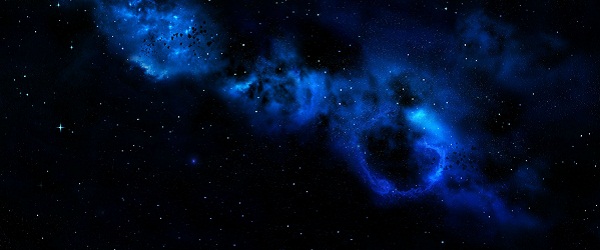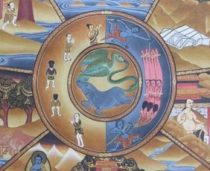There are a few interesting things happening that science is telling us. For instance, the galaxies don’t rotate faster in the center than they do on the outside, which is the way we would normally, in our science and in our understanding of gravity, know what is going on. It turns out the galaxies tend to be in like a synchronous orbit so that the outer arms of the galaxy are going as fast or faster around the center as the things that are in the center that are in alignment all of the time.
I suppose in some ways it is interesting. It may actually affect the way that the gravity field of the galaxy works on what’s around it. In other words, it wouldn’t be changing all of the time if the inside’s always rotated faster than the outside. Then we would expect all of the galaxies to more or less take on the same shape. However, some of the galaxies have a different shape. While those may be galaxies colliding, things like that are obviously going to change the shape of them.
The idea of galaxies colliding fascinates me, merging, more or less. In fact, I think that the milky way may have recently merged. It may still be in the final stages of making a merger. At any rate, the idea that the galaxies are rotating in a synchronous rotation rather than spiralling faster towards the center rotation is interesting, because it kind of indicates that maybe the entire galaxy is aging at approximately the same rate relative to itself.
So in other words, with speed, the faster things move, the faster time goes. At the center of a galaxy, then time would be progressing super fast. However, the age of the whole galaxy remains fairly constant in relation to itself, because of the synchronous orbit.

In a relative way to the outer world, the outside edge of the galaxy is moving faster than the inside edge, and it would therefore appear to be older, because of the speed of its movement. Interesting.
It has to cover a greater distance in the same period of time, so that means it’s actually moving faster.
So the outer edge, in a way, would be the older portion of it and the center the younger. It obviously works the other way around as well.
The dance of gravity is somewhat unknown. What they find around these galaxies and around these clusters of galaxies is this additional gravity that exists, and it exists as what they’re calling dark matter. They’ve mapped the dark matter out. They’ve seen how it affects the light that is coming through it and going around the galaxies and things like this and how it would be affected. They can see what it would normally look like, and they can see what it looks like, because of the additional gravitational field, and because of the dark matter. It seems like they can also map out the dark matter to see exactly how its gravity is. They do this really just looking at the light that is bent around these things.
They start to map out how much of a deviation that light has had to take in order to go around the galaxy that’s in its way. Then they can see that around that galaxy is an area of dark matter and area where the gravity is increased. However, the light hasn’t increased there, so typically we find gravity associated with light.

We’ve seen the black holes and things like this that are near stars and are pulling matter out of the stars. We can also map that gravity out and we can see how that is a black hole. That doesn’t explain the additional gravity that surrounds these galaxies and these galaxy clusters that add to the gravity, that add to the way, the light from behind it is affected. Yet it’s not anything that we can see at all. Seems like it does not generate any visible light at all, only gravity. It doesn’t seem to be blocking the images that are coming from around it.
It seems to be transparent to the visible light, and yet it has mass. Therefore, it is affecting the visible light. We just don’t know what that is, but that certainly added to the mass of the universe, because it’s also distributed in like strings or the texture of foam, through space, where this dark matter is unevenly distributed, and yet connected by strand or a channel I suppose, in one area to another. Therefore, one area of visible light is connected to another, creating a network essentially. The light of the galaxies in the way that they’re distributed, some in large clusters, small clusters, but others more rogue or loaner galaxies, and yet filling the space in a sort of a pattern, in a sort of a connected way.
Dark Matter
It seems that there may be corridors of just connecting lines of some sort of mass, something of some significance, that is extra light. In other words, it doesn’t seem to generate or absorb light, either one, yet it has mass. So that leaves us with another mystery, what is this? Why would it be connecting the galaxies together? What would be the point in that?

















